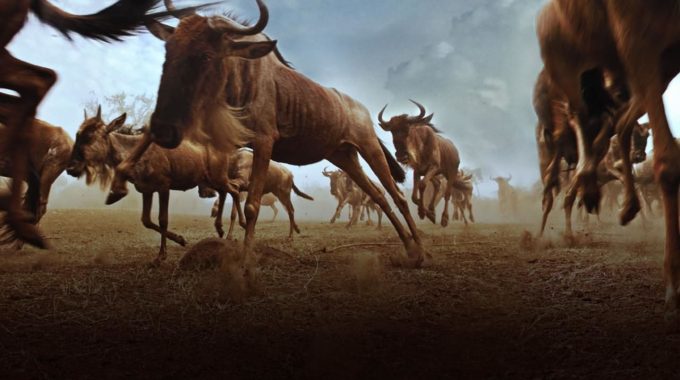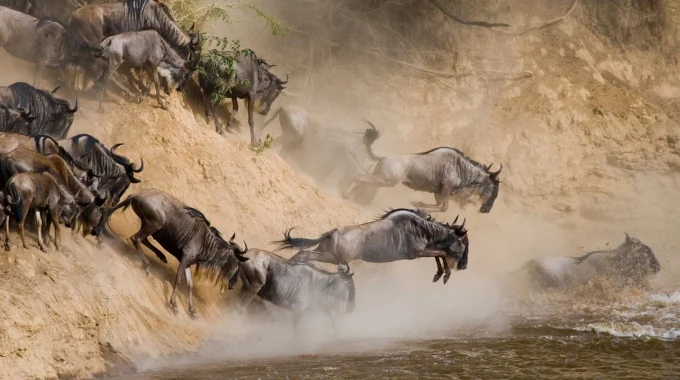A Kenya safari cost can vary significantly based on several factors, such as the season,…
How long does the Great Migration last?
How long does the Great Migration last? – The Great Wildebeest Migration is a year-round event, but the migration itself spans roughly 12 months, following a cyclical pattern as the herds move across the Serengeti-Mara ecosystem in Tanzania and Kenya. The entire migration lasts for about 1 year, with different stages of the migration taking place throughout the year as the animals follow the rain and the availability of fresh grazing land. Here’s a breakdown of the migration cycle:

1. Calving and Early Migration (January to March)
- Location: Southern Serengeti (Tanzania)
- The migration begins in January, when the wildebeest return to the southern Serengeti, where they give birth to thousands of calves. The calving season peaks in February, and this is the time when the herds are concentrated in the southern plains of the Serengeti. This period is crucial for the survival of the species, as the young are born and quickly learn to stand and move with the herds.
- Duration: The herds remain in the southern Serengeti for about 3 to 4 months, from January to March.
2. The Northward Journey (April to June)
- Location: Central Serengeti, Western Corridor
- As the dry season sets in and food begins to dwindle in the south, the wildebeest begin their northward migration. By April to June, the herds move through the Serengeti’s central and western corridors, heading towards the northern Serengeti.
- This is also when the herds start to form larger groups as they begin to follow the rains, with vegetation becoming greener to the north.
3. The River Crossings and Northern Serengeti (June to October)
- Location: Northern Serengeti and Maasai Mara (Kenya)
- The wildebeest typically reach the Mara River in July or August, and this is the most famous and dramatic part of the migration. The river crossings are fraught with danger, as the herds must cross crocodile-infested waters, and predators like lions, leopards, and hyenas lie in wait.
- The wildebeest continue their journey through the Maasai Mara in Kenya, where they stay until the end of October, before heading back south in November.
- Duration: The river crossings take place from July to September, with the herds remaining in the Maasai Mara for up to 3 months during the dry season (June to October).
4. Return to the South (November to December)
- Location: Maasai Mara, back to the Southern Serengeti
- After spending several months in the Maasai Mara, the wildebeest begin their southward migration in November, following the onset of the short rains in the Serengeti. By December, the herds start to return to the southern Serengeti to begin the cycle again with the calving season.
- Duration: The return to the south typically happens between November and December.
Key Points:
- Total Duration: The migration lasts about 12 months, starting in January when the herds arrive in the southern Serengeti and ending in December when they begin to head south again.
- Peak Events: The Mara River crossings (July to October) and calving season (January to March) are the most famous and dramatic moments of the migration, but the full journey unfolds over the entire year.
In conclusion, herds move continuously in a loop from the southern Serengeti to the Maasai Mara and back during the migration, which lasts for about a full year. The timing of each phase can vary slightly depending on rainfall patterns, but the cycle remains consistent year after year.



